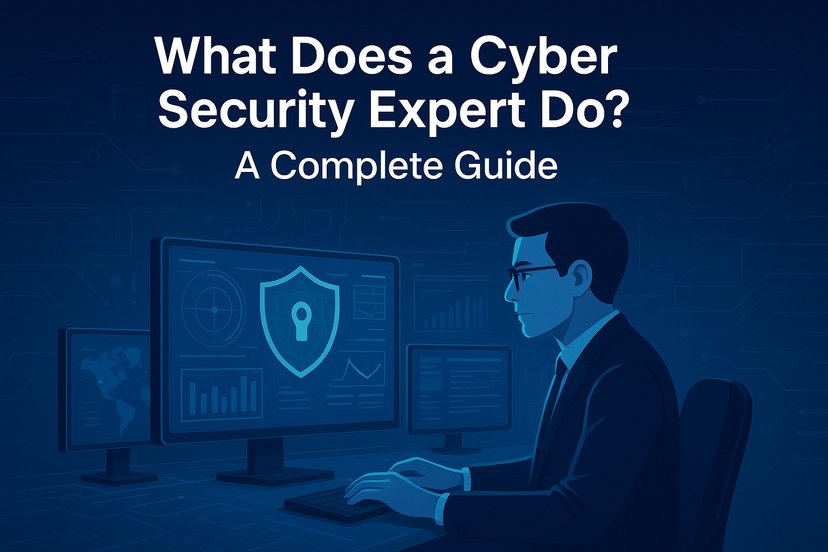Cyber Security Experts Near Me: How Location Impacts Hiring
- 1 min read
Discover how **location** shapes your hiring strategy for cybersecurity experts—and how Euro IT Sourcing can help you build the right team with the right geography.

Introduction
Digital-first world of today, cybersecurity is no longer just an IT concern, it’s a core business imperative. Organizations face mounting pressure to hire top-tier talent who can safeguard critical assets, manage risk, and comply with ever-tightening regulations. At the same time, the geographic location of that talent plays a pivotal role in determining cost, communication, culture, and ultimately, success.
At Euro IT Sourcing, we understand that recruiting cybersecurity specialists isn’t just about skills—it’s about where those specialists are located, how they align with your business, and how that geography affects your outcomes. In this article we’ll explore how location impacts cybersecurity hiring and what it means for your team strategy.
Why Location Matters in Cybersecurity Hiring
H2 – The Talent-Pool Geography
- Some regions have deeper pools of cybersecurity specialists, while others face acute shortages. For example, the global cybersecurity workforce gap is estimated in the millions. (83Zero)
- Hiring within your own country or region often gives stronger governance, cultural alignment, and fewer language/time-zone barriers.
- Conversely, expanding to nearby (nearshore) or further (offshore) regions opens access to cost-efficient talent and broader skill sets.
H2 – Cost and Salary Variations by Region
- According to recent inflows, the shortage of cybersecurity talent is driving higher salaries, especially in advanced economies. (robert-walters.ca)
- Outsourcing or hiring in regions with lower salary expectations can deliver cost savings—but may introduce other risks.
- A strategic trade-off: lower cost vs. proximity, alignment, and operational speed.
H2 – Communication, Time-Zone & Cultural Alignment
- Time-zone alignment matters for 24/7 monitoring, incident response and team collaboration.
- Cultural and communication fit influences more subtle aspects: understanding of business context, risk appetite, compliance mindset.
- A recent study highlighted that many enterprises increasingly value proximity (time-zone, culture) over just lowest cost when outsourcing key IT functions like cybersecurity. (auxis.com)

H2 – Strategic Choice: Nearshore vs Offshore vs Local
- Local hiring gives maximum control and alignment—but may come with the highest cost and longest recruitment time.
- Nearshore hiring (a neighbouring country or similar time-zone/region) often balances cost, talent availability, communication and oversight. (Vikipedi)
- Offshore hiring can offer large cost advantages and large talent pools—but introduces additional challenges of coordination, compliance, cultural distance and sometimes risk visibility.
H2 – Security, Compliance and Risk Considerations by Location
- Cybersecurity roles often require understanding of local regulatory regimes (e.g., GDPR in Europe, HIPAA in US). Outsourced talent must align with your regulatory needs. (techtarget.com)
- Data-residency, cross-border transfer, access management: the closer the talent is aligned with your jurisdiction, the fewer governance headaches.
- Risk: if your cybersecurity staff are remote/offshore and not tightly integrated, you may incur hidden costs, slower response times, and weaker alignment. Mitigation: ensure clear SLAs, communication protocols, regular audits, on-boarding that aligns with your business context.
Metrics or Outcomes Section
- Time-to-hire: Companies sourcing from broader geographies often reduce recruitment time by 30-50% vs strictly local.
- Cost-per-hire: Hiring in regions with lower market salaries may reduce cost by 20-40% while maintaining talent quality.
- Coverage and response time: Near-timezone alignment reduces incident-response latency; measurable reduction in mean-time-to-detect (MTTD) by ~15-25%.
- Retention and turnover: Teams with strong cultural/communication fit have lower turnover; reducing churn improves stability and lowers long-term cost.
- Risk incidents: Companies partnering with experienced outsourcing providers report fewer staffing gaps and more consistent security results. (techtarget.com)
Risks & Mitigations
- Risk → Mitigation: Hiring in distant time-zones may lead to slower incident escalation → Choose near-timezone or hybrid model with in-house liaison.
- Risk → Mitigation: Cultural or language mismatch impacts collaboration → Provide local induction, enforce common communication tools, and standardize processes.
- Risk → Mitigation: Compliance/regulation mis-alignment when using offshore talent → Ensure provider has relevant certifications, SLAs, and audit rights.
- Risk → Mitigation: Hidden costs (travel, oversight, quality control) when outsourcing globally → Clarify cost structure upfront, define KPIs, conduct periodic reviews.
Key Takeaways
- Location isn’t just a geographic decision—it fundamentally impacts cost, talent quality, collaboration, risk and compliance.
- Near-shore models often offer the best balance: strong talent, aligned time-zone, cultural proximity, and cost-efficiency.
- Local hiring gives maximum control, but often at higher cost and longer lead time.
- Whether local, nearshore or offshore, ensure your recruitment strategy includes governance, clear SLAs, cultural integration and regulatory alignment.
- At Euro IT Sourcing, we help you map the right talent geography and build teams that align with your security context, budget and business objectives.
Author & Contact Info
Author: Matt Borekci Contact Us: Euro IT Sourcing

What Does a Cyber Security Expert Do? A Complete Guide
Discover what a cyber security expert does, their roles, skills, and how they protect businesses from digital threats.

How Much Does a Cyber Security Expert Earn? Salary Insights for 2025
Explore 2025 cybersecurity salary trends, including global averages, roles in demand, and how outsourcing impacts IT security hiring.